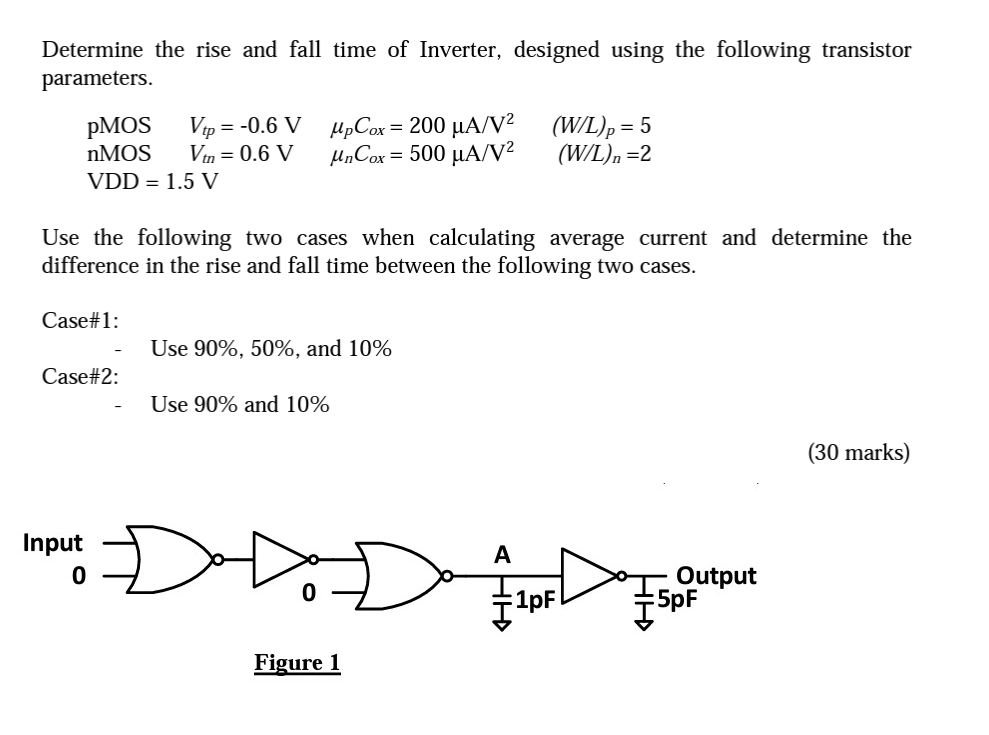Determine the rise and fall time of Inverter, designed using the following transistor parameters. pMOS Vtp = -0.6 V upCox = 200 uA/V2 (W/L)p = 5 nMOS Vtn = 0.6 V unCox = 500 uA/V2 (W/L)n = 2 VDD = 1.5 V Use the following two cases when calculating average current and determine the difference in the rise and fall time between the following two cases. Case#1: Use 90%, 50%, and 10% Case#2: Use 90% and 10%



You'll get a detailed, step-by-step and expert verified solution.
 Work With Experts to Reach at Correct Answers
Work With Experts to Reach at Correct Answers